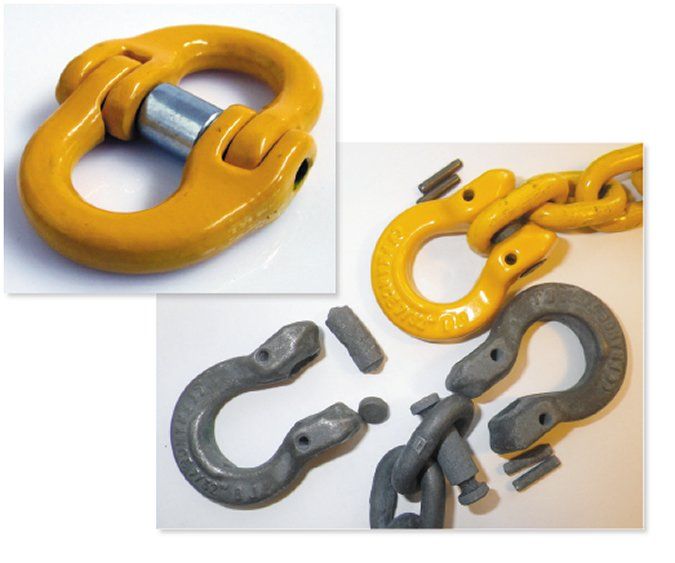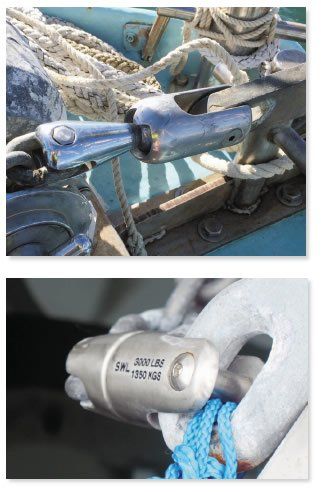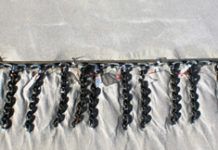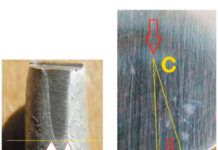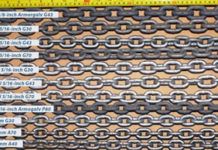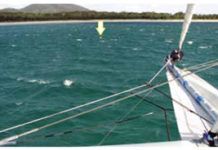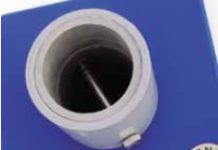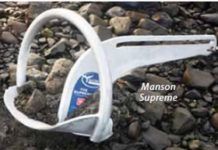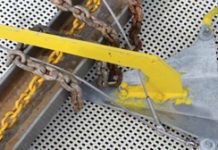Armorgalv vs. Hot-Dipped
As part of our investigation into anchor chain and its attachments (see PS January 2015 and June 2014 online), we examined new galvanizing processes. Steel products that have clearly undergone an unconventional galvanizing process are making their way into the recreational marine market, but because these methods are proprietary, getting specifics about them is difficult. Industry insiders tell us that the galvanizing process is evolving-but few details are made public.
Does G70 Have Risk of Hydrogen Embrittlement?
Mention galvanized G70 chain in any discussion, and one of the first comments will be a question of the risks of hydrogen embrittlement. Though hydrogen embrittlement is very real, there have been no well-publicized cases of galvanized G70 anchor chain failure, nor cases of hydrogen embrittlement in new galvanized G70 anchor chain, and negative comment is apocryphal, in our opinion. Scare mongering at its best, or worst.
Galvanized Coatings Test
Corrosion attacks anchor chain long before it has reached the end of its useful life, and corrosion begins as soon the galvanized coating fails. Re-galvanizing can breathe new life into old chain, but it is not so simple or affordable as it used to be. As we saw in our most recent report on chain (see Practical Sailor June 2014 online), some of the high-tensile grades require specialized skills to galvanize, and others can't be galvanized at all. Even if galvanizing is an option, removing rusty old chain from the boat and delivering it to the galvanizer can make moving pianos seem like a cinch.
Estimating Galvanized Coating Thickness
There are no industry standards for how thick a galvanized coating should be on an anchor chain or mooring chain, and manufacturers don't publish this information. Fortunately, with a bit of sleuthwork, you can determine just how good the galvanized coating is on your chain by carrying out a couple of tests on some sample links you can obtain from your local chandler.
Looking into High Test Myth
In recent years, our chain tests (see PS September 2006, July 2007, July 2008, and October 2012 online) were limited to G30 and G43 (high-test) chain. Our conclusions were pretty straightforward: We would avoid stainless steel for several reasons, the most persuasive being its tendency to fail without warning-as our test sample did. Recognizing that corrosion is what ends the life of most chains, we were not convinced that shelling out more money for the extra strength of G43 chain made sense. It lasted no longer than G30.
PS Asks Who Would Even Consider G7 Chain?
The value of catenary varies with the depth of the water. In shallower waters, bottom friction replaces gravity as a force of resistance against shock loading.
Moorings Soft Side
Every decade or so, local sailing clubs go through a re-evaluation of their mooring fields, looking for ways to improve or upgrade equipment without straining their budget. Island Mooring Supplies, the same Rhode Island-based company that introduced the splinter-free Deluxe Pickup Stick we featured in the April 2010 issue, has developed a new, soft mooring buoy designed to put an end to the annoying hull-knocking of conventional mooring buoys.
Real-World Anchoring
After nearly four decades of being married to my CQR plow anchor, I decided to try a new anchoring solution aboard my Ericson 41, Wind Shadow, and mounted a Manson Supreme on her bow roller. Ill be long-term testing the Manson, but heres a preliminary look at the CQR and the Manson.
Anchor Rode Report
In our continuous research of ground tackle, we noticed that large oil rigs are often anchored into place with a spider web of stranded wire-or in some cases, Dyneema, a low-stretch, high-strength synthetic fiber. We wondered whether Dyneema or a wire cable might have some application in recreational sailboat anchoring, and we launched field tests to find out. These tests also looked at how changing the diameter of your anchor chain affects anchor performance.
Rodes Tested from Shore and Catamaran
Our test anchors included a small, 11-pound Spade anchor, which we set using a chain winch off a beach in Pittwater, Australia. We set the anchors using two different rodes: 30 feet of 5/32-inch stainless wire strop that we fabricated using old lifelines and 33 feet of quarter-inch, short-link BBB chain. We extended each rode with 5/16-inch chain and aimed for length-to-depth ratio of a 5-to-1.
































